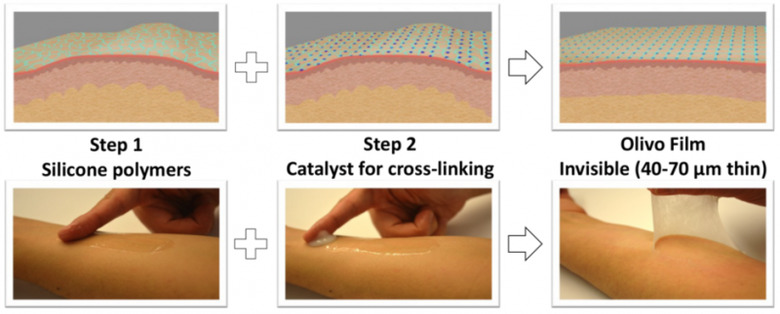Invisible 'Second Skin' Blocks UV Rays, May Help Treat Skin Diseases
Researchers have developed a polymer they call a 'second skin,' and it could one day be used to apply medication directly to a person's skin or to protect against UV exposure, among other things. The polymer comes from Olivo Labs, a company that focuses on creating proprietary biomaterials for use in the dermatological field. Researchers call their new polymer 'XPL,' and say it offers the same mechanical properties as "youthful [real] skin."
XPL, recently detailed in the journal Nature, is made using a 'tunable' polysiloxane-based material able to provide specific levels of tensile strengths, elasticity, adhesion, occlusivity, and contractility, according to Olivo Labs. As demonstrated in the images below, the polymer is applied directly onto the skin where it cures to form a 'second skin' that peels away somewhat like dried craft glue. The second skin does not require any light or heat to activate it.

Because it's tunable, the polymer can be adjusted to meet specific needs. In a recent pilot study with human participants, researchers used XPL that had the same tensile modulus as regular skin under low amounts of strain. The secondary skin, which can also be used for rejuvenation therapies, was applied to the under-eye skin region of the volunteers who had the lower eyelid fat pads graded on a 5-point scale of severity.
Among the participants (and as shown below), the volunteers averaged a 2-grade reduction in the fat pad's appearance.

In addition, the secondary polymer skin could be used by dermatologists to treat skin conditions like eczema; a version with SPF ingredients added could also be used as a long-term protection against sun rays versus traditional sunblock lotions. In comparison to commercial products, the researchers' tests found XPL had less water loss (when it comes to hydrating skin) and better overall effectiveness for dressing wounds (when it comes to how thick and visible it is, how flexible, and how elastic).
Olive co-founder Dr. Rox Anderson spoke about the polymer, saying:
This 'skin conforming' platform brings with it transport properties that have significant promise to treat underlying conditions. For eczema or sun protection as examples, this second skin platform can then serve as a reservoir for control-release transdermal drug delivery or SPF ingredients, a possibility we are currently pursuing in our lab.
